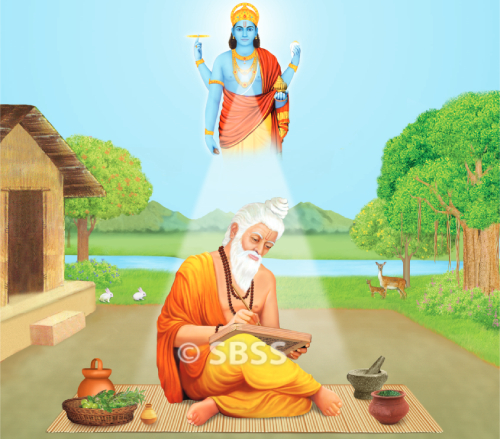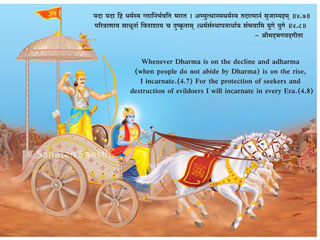Ayurveda for a healthy life ! – 5/2023


1. Vastushastra and the arrangement in the kitchen
Vastushastra is the science of appropriate construction of a structure and placement of objects in a room, with reference to the eight directions. At the time of creation of the earth, Shri Vishnu created the eight directions from His ears and created the dikpals (The eight guardian Deities) for the directions. These guardian Deities protect all the animals including man, and bestow them with a happy life, if people abide by Dharma (Code of Righteous conduct). They also punish people, if they do not abide by Dharma. The Names of Deities protecting the various directions are given in the table ahead.

| Direction | Guardian Deity |
| East | Indra |
| South-east | Agnidev |
| South | Yama |
| South-west | Nairutya |
| West | Varun |
| North-west | Vayudev |
| North | Kuber |
| North-east | Shiva |
Hence, it is important to place objects in the kitchen according to Vastushastra. The Deities are appeased by such an arrangement and they bless the owner of the house.
1A. Arrangement in the kitchen as per Vastushastra
1. The kitchen should be located in the south-east direction in the house.
2. The kitchen platform should be constructed in the south-east direction of the kitchen hall.
3. While cooking, the cook should face the east.
4. The gas cylinder and stove should be kept in the south-east direction.
5. The cupboard storing the ingredients and spices should be kept along the south or west wall.
6. Drinking water should be kept in the northern direction.
7. The door of the kitchen should not open directly opposite to the kitchen platform.
8. The wash basin should be placed in the north-east direction.
9. The dining table should be placed in the north-west direction of the kitchen.
2. Dining room
The dining room should be separate and slightly segregated so that there is no disturbance from other people while eating. It should be clean, pious, and spacious, well lit, well equipped with cutlery, well decorated with fragrant flowers and should have pleasant surroundings. One should not eat food in public or in an open place, in the dark or in direct sunlight, under a tree or in bed.
3. Utensils used for serving food
Specific food items should be served in specific utensils, as given in the table ahead.
| Food Item | Type of serving utensil |
| Ghee | Iron |
|
Rice kanji, fruit juices or other liquid food items |
Silver |
|
Fruits and other food items |
Banana leaf |
|
Dried and roasted food items such as dry fruits and laddoos (sweet made into balls) |
Gold |
|
Cold milk, water |
Copper |
|
Water, wine, sharbat and panha (A drink prepared from raw mango) |
Earthen or a glass vessel |
|
Koshimbir (Salad), curd, buttermilk and kadhi (Type of curry made from pulse flour and curd) |
Glass vessel |
Eating food in a gold plate subdues all the three doshas (Humours), i.e., Vata, Pitta & Kapha and promotes good eyesight. Eating food in a silver plate improves the eyesight and subdues Pitta, but it increases the Kapha and Vata doshas. Keeping food on a copper plate improves its taste. Eating food in a copper plate promotes the intellect and proves useful in blood disorders. Keeping food in a brass plate increases the dryness of food. Eating food in a brass plate, increases the Vata and Kapha doshas, promotes worm infestation and leads to abdominal pain. Eating food in an iron vessel, is useful in swelling, anaemia and jaundice. Food taken in a wooden plate becomes tasty and it increases the Kapha dosha. Eating food on a banana leaf, promotes the digestive power, subdues toxins and makes the food tasty. One should not eat food from clay or a stone plate. One should drink water from a copper or a glass vessel.
4. Arrangement of food items in a plate
Rice, roti and bhakari should be served in the centre of the plate. Fruits and dry food items should be served on the right side of the plate and all liquid food items, i.e., those with gravy should be served on the left side of the plate. Raita, chutney and food items prepared from jaggery, pickles, etc. should be served in front of the rice on the left side.
5. When should a person dine ?
The ideal time to eat is, when a person feels hungry. However, in cities, one has to adjust one’s meal time, according to the office hours. Even children have to adjust their meal time, according to school hours. After some time however, one gets habituated to these timings and feels hungry at that time. It is necessary to adjust the quantity and the time of taking a meal in such a way that we automatically feel hungry by the next meal time.
When habituated, one feels hungry at a particular time, even if one’s stomach is not empty. Similarly, after one sees or gets the aroma of tasty food, one cannot overcome the temptation to eat, even when one’s stomach is full. One should not succumb to such temptations.
After passing stools, urine, flatus and burping, the baby feels light and hungry. These signs indicate that the initial food is digested. Only then should the baby be given more food. One should not eat until the previous meal is digested.
An adult should never eat any food within three hours of his lunch or dinner. A labourer should not remain without food, for more than three hours.
During the day, the blood is diverted to the active muscles. Hence, the intestines receive comparatively lesser quantity of blood. At night, more blood is diverted towards the intestines. Hence, food is digested best, at night. Therefore, one should take a light dinner if the lunch is not digested well. If the dinner is not digested well, one should have a late lunch or skip the lunch.
One should not eat food at midnight or early in the morning. However, young, growing infants are an exception to it. They should be fed whenever they are hungry.
Before meals, one should have a bath and wear clean clothes. One should use perfume and women should decorate their hair with flowers. One should wash his hands, feet, face and rinse the mouth before eating.
One should see that the elders, children, guests, the cook and servants have eaten their meal and that all the animals and birds in the household are fed properly. One should offer a prayer and a little food to the Deities and one’s ancestors. Eating food is itself a good deed and it helps to sustain our life and health which are instrumental in all our good deeds.
6. Is it advisable to take an appetiser before meals ?
A person with a good appetite need not take any appetiser before meals. People with a weak digestive power should take the following appetisers before meals. Appetisers should have a sour, pungent and salty taste. A combination of fresh ginger, lemon and saindhav salt (rock salt) is a good appetiser. It exerts a cleansing action on the tongue and throat. Ginger is pungent, hot and stimulates the digestive power. It breaks scybalous (hard) faecal mass and subdues Vata and Kapha. Saindhav stimulates the digestive power. It makes food tasty and subdues all the three doshas (Humours). Fruits and soups are also used as appetisers.
Fruits : Fruit juices or fresh fruits such as pomegranate which increase the appetite and secretion of digestive juices should be eaten before meals. It cleanses the tongue and throat. One should avoid eating heavy fruits such as banana and pineapple before meals. One can take panha prepared from raw mango, kokam sharbat, etc. before meals.
Soup : A normal person should not start his meal with soup. People with a weak digestive power, should take soup with pungent, sour and salty spices which stimulate the secretion of digestive juices, e.g., tomato soup with sunth (dry ginger) and pepper.
7. Is it advisable to have an alcoholic drink as an appetiser before meals ?
Alcoholic drinks such as beer and wine are often taken as appetisers before meals. Though alcohol is an easily available source of energy, it is not a food item. It is quickly absorbed when taken in small quantities. It stimulates appetite. It gives a feeling of relaxation and helps a person to forget his misery. However, logical thinking and the ability to take an appropriate decision are affected under the influence of alcohol. Alcohol should not be consumed by individuals suffering from hyperacidity, peptic ulcer, jaundice, diseases of the Pitta dosha, bleeding disorders and fever. Individuals with a weak and unstable mind get addicted to alcohol easily. Individuals with a hot temperament cannot tolerate alcohol. Prolonged and excessive consumption of alcohol leads to obesity, damages the stomach & liver and decreases the appetite and digestive power. Alcohol should not be consumed in summer. One should avoid drinking fresh (immature) wine while old wine should be drunk. Rajasik (Raja-predominant [who lives more for personal gain and achievement]) and tamasik (Tama-predominant [who has no problem about stepping on other’s toes to get ahead]) people have no control over their mind, so they get addicted to alcohol soon. Hence, consumption of alcoholic drinks should be avoided by them.
8. Selection of food
One should select the quality and type of food, after considering one’s age, constitution, season, time, digestive power, health, etc. One should feel hungry and eat the right type of food at the appropriate time, in an adequate quantity. One should be habituated to the type of food eaten. The food should be fresh, warm, palatable and easily digestible. One should be in a happy state of mind while eating. One should not take food which one does not like or which one cannot tolerate. One should be carefree and should focus the mind on eating, and enjoy the taste and flavour of food.
Food should be cooked properly and should have good aroma and taste. It should contain some amount of oil and ghee. The food should be warm, but should not be heated or fried again. One should have food of all the six types of taste, i.e., sweet, sour, salty, pungent, bitter and astringent and not food which is dominant in only one or two tastes. However, sweet food items should be eaten in a greater quantity.
8A. How should one serve the courses of food ? : One should follow the regional traditions regarding courses of food. However, the general guidelines are as follows.
1. The first course should consist of sweet, heavy, solid, oily or fatty and hard food items, which are difficult to digest. Sweet food items subdue Vata.
2. The middle course should consist of sour, pungent, salty and soft food items, which increase the secretion of digestive juices.
3. The last course should consist of pungent, bitter, astringent, light, liquid, dry and soft food items. Pungent, bitter and astringent food items subdue Kapha.

 Radiant Thoughts of Sachchidananda Parabrahman (Dr) Jayant Athavale
Radiant Thoughts of Sachchidananda Parabrahman (Dr) Jayant Athavale Law banning Conversion of Religion is against Individual Freedom : Babbles Former Judge S Muralidhar
Law banning Conversion of Religion is against Individual Freedom : Babbles Former Judge S Muralidhar Editorial : Khalistan, Balochistan and Pakistan
Editorial : Khalistan, Balochistan and Pakistan After India becomes a ‘Hindu Rashtra’, Russia will embrace Hinduism and spread it globally : Nostradamus’ Prophecy
After India becomes a ‘Hindu Rashtra’, Russia will embrace Hinduism and spread it globally : Nostradamus’ Prophecy ‘Halt Public Spending on Aurangzeb’s Tomb, Prioritise Maharashtra’s Heritage’ : HJS
‘Halt Public Spending on Aurangzeb’s Tomb, Prioritise Maharashtra’s Heritage’ : HJS Noise Pollution, Loudspeakers, and the Law
Noise Pollution, Loudspeakers, and the Law